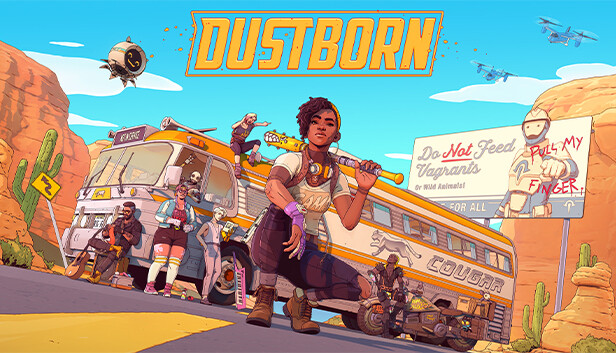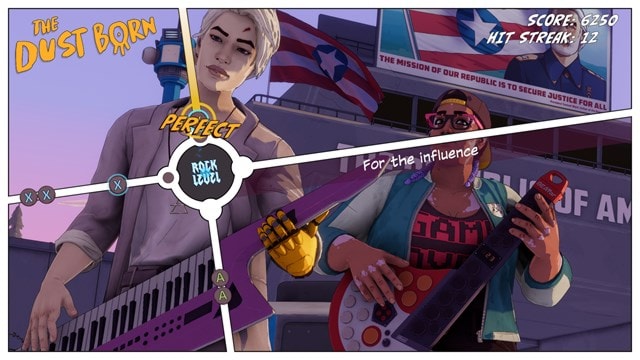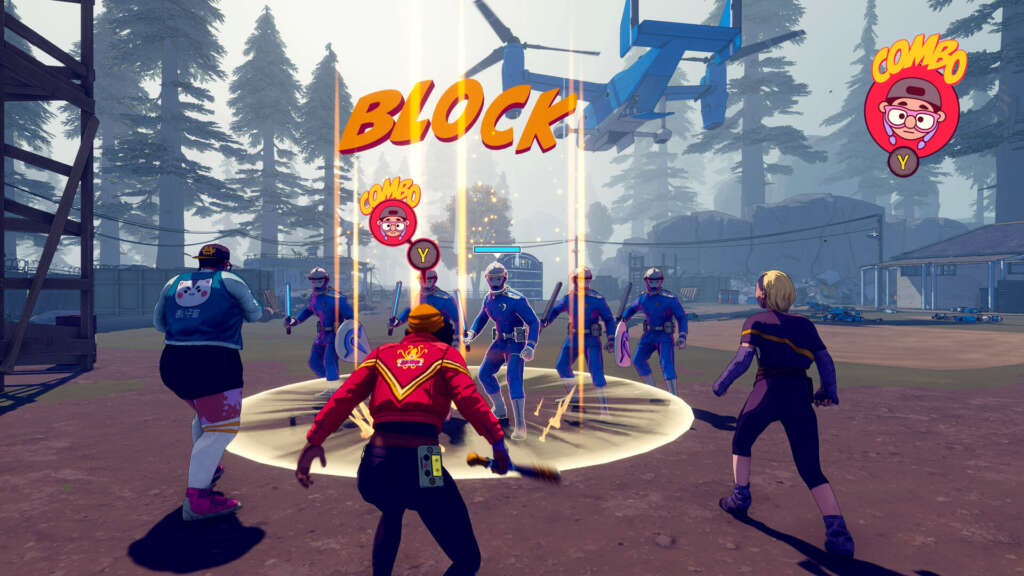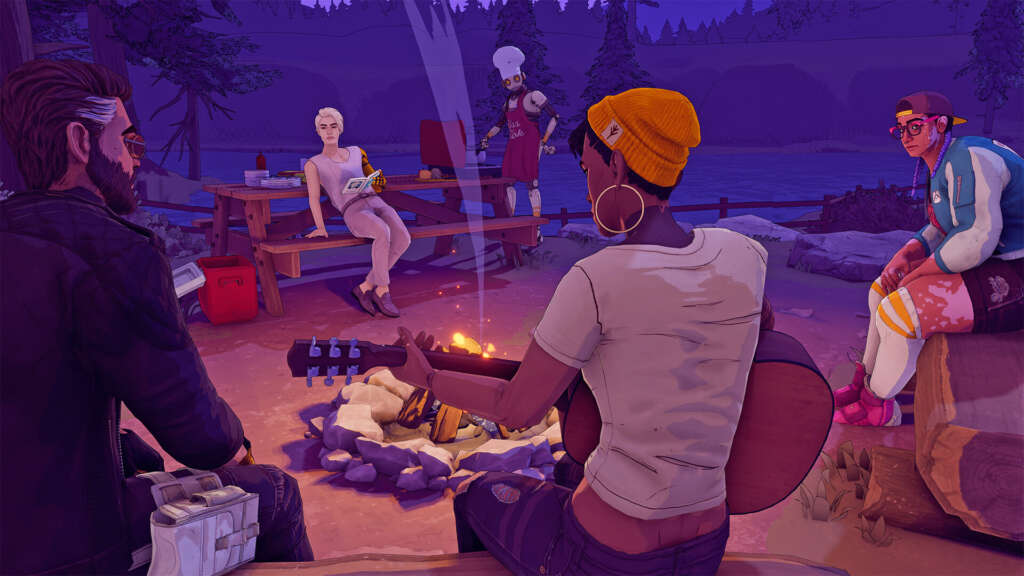A Little Confused, But It’s Got Spirit

Upon first glance, Red Thread Games’s Dustborn could’ve easily have been confused for a beat for beat variant of Telltale games like Wolf Among Us and Tales From the Borderlands. However, shortly after loading up the game, Dustborn does set itself apart a fair bit. With a mix of choice-driven narrative, rhythm mechanics, a little bit of puzzle-solving, and a little bit of combat and superpowers, Dustborn brings a lot of pieces to the table in comic artstyle skin.
The artstyle of Dustborn serves its medium very well, and its brighter color palette helps it stand out from similar executions that aim for darker tones and concepts. The beautiful saturation and contrast makes it easy to want to explore, as well as take in details about each character’s design. From Sai’s vitiligo to Noam’s prosthetic, from the stickers on Caretaker to Pax’s tattoos, each character has unique features in solid character designs that fit into the comic aesthetic Red Thread has applied to their world.

Narratively, Dustborn brings forward a story mainly focused on self-discovery, a search for freedom, and restoring, or breaking, bonds. The player mainly gets a focus on Pax as our protagonist, whose super power, or Vocals, gives her the ability to influence the actions and emotions of others. As Pax, players get the chance to explore relationships ranging from friendly to antagonistic with the rest of the crew on the trip across a fictional future America. Each of the rest of the crew has their own stories they seek resolution to that Pax can either encourage or discourage them on, changing not only how they interact with Pax, but also how they might react to situations that arise throughout their trip. A moment of “tough love” early on may lead to not being presented with a more peaceful approach to a situation from that character later.

While strong in design both narratively and artistically, Dustborn has a fair amount of mechanics to juggle, and this is arguably where the game stumbles a tad. The exploration and puzzle solving that makes up most of the game is strongly constructed, with the only real risk being missing out finding a collectible or gift if the puzzle is solved too quickly and progresses the story. The rhythm mode for band performances uses traditional button input on a timed press or hold format, but instead of a flat line across the lower third of the screen, the sequence appears from four directions towards a circle on the left third of the screen. In theory, a simple stylistic choice, but in practice, it can make the entries harder to time for precise entries. The lines that the button symbols travel along also cuts the screen into four panels, which arguably disrupts the animations of the performance. In a similar vein to tried and tested mechanic, but with debatable differences, the combat for the several instances of it. Each combat moment is generally set in a relatively open area against several waves of enemies and one “boss.” Pax has a bat, her powers, and team up abilities with the crews’ own powers to bring to bear against enemies. Unfortunately, the battle inputs are clunky with odd hit-boxes, a low health bar, and odd input timings. While stylistic with comic sound effect pop-ups to both emphasize the action and direct players when a special interaction is needed, the combat sections feel the least realized of the set pieces that make up the game.

Overall, Dustborn has a lot of heart and is clearly trying to accomplish a balancing act of a lot, and it does succeed at most. However, it would have benefited a bit from reassessing how many mechanics to include in its balancing act. The characters are interesting and their designs are fantastic, and the story is intriguing with a lot of heart.
